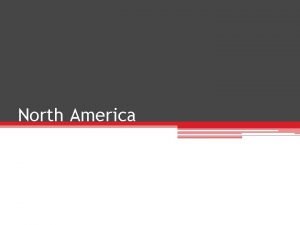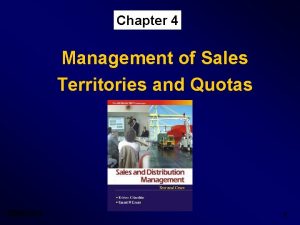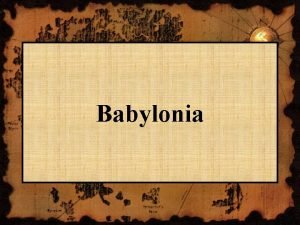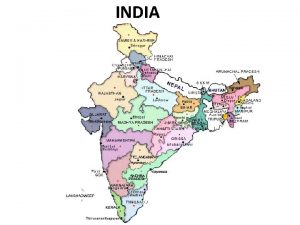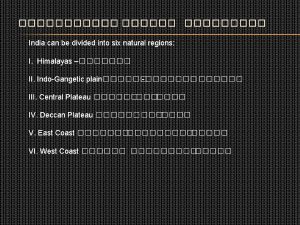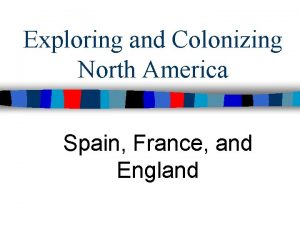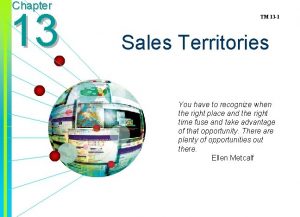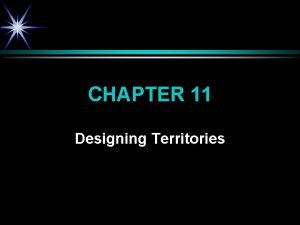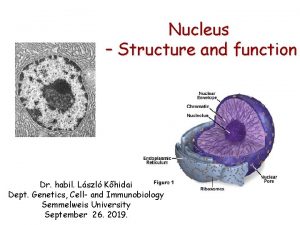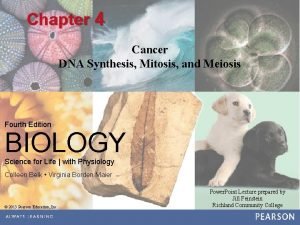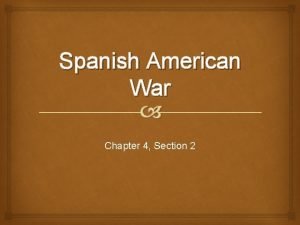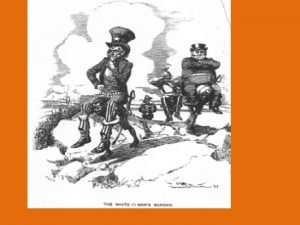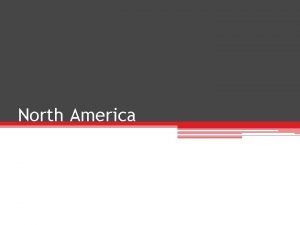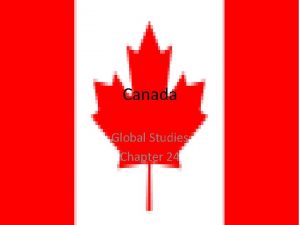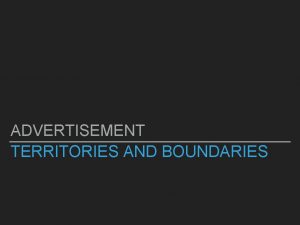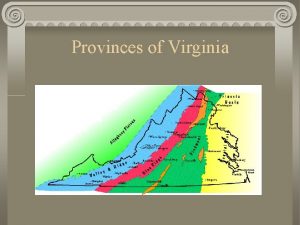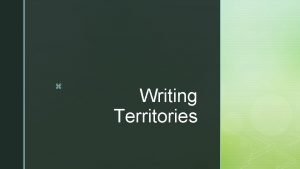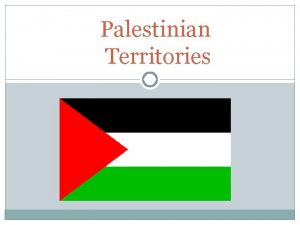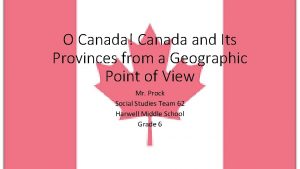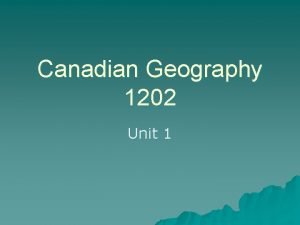Canada Geography Provinces and Territories Canada has 10













- Slides: 13

Canada Geography

Provinces and Territories �Canada has 10 provinces and 3 territories • Province = political division �We will divide Canada into 5 regions �These regions are more distinct than the regions we studied in the U. S. �Why? • Canada’s population is small • Structure of government gives a lot of power to provinces

The Atlantic Provinces � Formed by: • Newfoundland Labrador • Prince Edward Island • Nova Scotia • New Brunswick � Border the Atlantic Ocean � Part of the Appalachian Mountains � Deciduous forests � Rugged mountaintops � Thousands of lakes and small ponds � Thin soil, lots of rocks and boulders

The Atlantic Provinces � Called “Maritimes” due to close ties with the sea � Most residents live along the coast � Smallest region – land population � Fishing industry • Once one of the world’s richest fishing areas, before overfishing depleted the supply � Forestry and farming • Occurs where soil permits, like Prince Edward Island � Tourism � Oil discovered off shore

The Great Lakes & St. Lawrence Provinces �Quebec and Ontario �Core of Canada’s population and economic activity • Canadian Shield – poor soil, cold climate, rich mineral deposits • Hudson Bay Lowlands – flat, sparsely populated, swampy • St. Lawrence Lowlands – rich soil, mild climate � 60% of Canada’s population lives here

Ontario �Great Lakes, lots of waterways �Rich soil, lots of resources �Manufacturing and distribution in cities • Cars, food, clothing, building materials �Toronto, Ontario = largest metropolitan area in Canada • Banking and financial center of Canada • Canadian version of Wall St. is here �Ottawa, Canada’s national capital

Quebec �Mostly a wilderness of forests, rivers, lakes, and streams �Northern part of Quebec is tundra �Mining and forestry �Montreal = largest city �City of Quebec (capital) is oldest city in Canada • Founded by Samuel de Champlain, sent by France to establish a colony • Tourist attraction • Center of Canada’s French-Canadian population

The Prairie Provinces �Contains: • Alberta • Manitoba • Saskathewan �Wheat, flatland, lakes, rivers, “badlands” with strange rock formations, sand dunes

The Prairie Provinces �Most of settlement here is due to railroads �Provide most of Canada’s grain and cattle �Tourism – Rocky Mountains �Oil and natural gas in Alberta provided a new source of wealth in this region

British Columbia � Rocky Mountains and the Coast Mountains � 4/5 s of province’s residents live in Vancouver (capital) � One of Canada’s wealthiest provinces thanks to natural resources • Salmon • Forests • Minerals � Wet, marine climate • People move here to retire � Trade with Asia from Vancouver’s harbor • Grown city rapidly • Increased population with Asian immigrants

The Northern Territories � Consists of: • Yukon Territory • Northwest territories • Nunavut � Cold, almost no trees, not many people � Mostly native peoples, like the Inuit (aka Eskimos), live here � Contact with white people has changed Inuit culture • Hunters use snowmobiles instead of dog sleds for seal hunting • Some children go to school at home taking classes transmitted by satellite over radio or television

The Northern Territories �Minerals found here: • Gold, silver, copper, zinc, lead, iron ore, uranium �Petroleum and natural gas �Most of these natural resources are still buried in the earth �Harsh climate and rugged terrain make it difficult to mine and transport materials

Questions 1. 2. 3. What economic activities are important in the Atlantic provinces? How have location and resources influenced economic activities in a) The Prairie Provinces, and b) British Columbia? Choose two of Canada’s regions and compare their physical features, economic activities, and population distribution.
 Great plains of canada
Great plains of canada English speaking provinces in canada
English speaking provinces in canada Clover leaf routing plan
Clover leaf routing plan Many territories and peoples controlled by one government
Many territories and peoples controlled by one government Indian states and union territories
Indian states and union territories India is divided into how many natural regions
India is divided into how many natural regions European colonization of americas
European colonization of americas Powerful military lords who headed small territories
Powerful military lords who headed small territories Build up method of territory design
Build up method of territory design Designing territory
Designing territory Pars fibrosa
Pars fibrosa Chromosome territories
Chromosome territories Spanish american war territories
Spanish american war territories What factors did you consider in acquiring territories?
What factors did you consider in acquiring territories?
